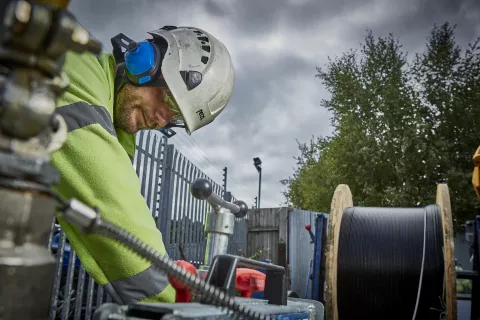The FTTH Council recently released its latest annual global ranking of FTTH deployments and the UK wasn’t listed. Here James Enck, head of corporate development, at CityFibre Holdings looks at why the UK is lagging behind the rest of the world:
“If we look at markets where FTTH roll-out is relatively advanced, there's almost always a common thread running throughout all - a third source of investment in the market which stimulates FTTH as an alternative to legacy incumbent infrastructure. In Denmark, Norway, parts of the US, and now Germany, this has come from the utilities industry. In Sweden, it has been municipal projects. In countries like The Netherlands and Hong Kong it has been entrepreneurial investors who saw an opportunity to create disruptive infrastructure.
“Until recently, the UK has lacked representation from any of these sources of investment. There have been a few municipal and regional projects, which have delivered fairly inconclusive results so far, nothing significant from the utility space, and very little entrepreneurial capital. The latter category has, however, seen an upsurge in activity in the past year, with innovative companies such as Hyperoptic, Gigaclear, and CityFibre committing to new entrepreneurial investment in pure fibre infrastructure, and creative new approaches to community-driven models, such as B4RN in rural Lancashire.
“Collectively, these are still a small piece of the puzzle of how to provide true fibre access to as much of the country as possible, but what they demonstrate is a realization that the size of the challenge is greater than the incumbent infrastructure players can respond to in the medium term. That vacuum will need to be filled by investment from independent sources if the UK is to narrow the gap with other, more advanced countries.
”True FTTH networks can deliver 1Gbps symmetrical services economically today, and it won't be long before 10Gbps to the home becomes a reality. Many detractors have questioned whether there is a viable business model around FTTH and also whether consumers can actually derive any tangible benefits from ultra-high speed, symmetrical connections. In Hong Kong, a 1Gbps symmetrical connection costs HK$229 (£18) per month, offered by a company which is profitable, has no debt, and pays dividends to shareholders. More advanced markets like Hong Kong seem to strongly suggest that the answer to both questions is, ‘yes’.
“However, we're in the early stages of learning as to what the wider long-term socio-economic benefits of symmetrical fibre connections might be. One also has to consider the profound implications for transport, the environment, social service delivery, healthcare, education and business formation in a world where ordinary consumers enjoy connectivity at home which is far superior to what many UK enterprises manage with today. A 2009 OECD study concluded that cost savings of a mere 0.5 - 1.5% over ten years in each of the electricity, healthcare, transportation and education sectors of a given country could justify the entire investment in a ubiquitous national point-to-point fibre network. As with the electricity grid before it, we can't pretend to be able to second guess what sort of innovation might take shape around a fit-for-purpose broadband network in the long-term.
“The most effective steps towards closing the gap between the UK and the leaders of the FTTH league table would be to remove barriers and disincentives to investment by entrepreneurial sources of capital. The asymmetry which exists in the rating system for fibre networks, which currently rewards incumbent scale and punishes investment which lights up new fibre, should also be revisited.
“If the Government is serious about seeing private sector solutions to public infrastructure problems, it shouldn't be so over zealous in taxing sources of potential economic stimulus. Allowing local councils more flexibility in how they procure and fund networks would give them more self-determination in shaping connectivity options for their communities as a lever of economic development policy.
“The City has a role to play in creating awareness of fibre infrastructure as an investable class of infrastructure too. In these uncertain times, investors are looking for long-term, stable financial returns and traditional infrastructure projects are a natural place to put money. Fibre infrastructure projects, executed properly, have the same qualities, but they have yet to be packaged into fund structures which can tap investor demand at scale. As with FTTH itself, our neighbours in Holland have established a leadership position in this new area of finance, and the UK currently once again finds itself in the role of follower.”
James Enck - Corporate Development - CityFibre



